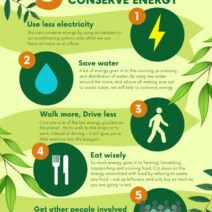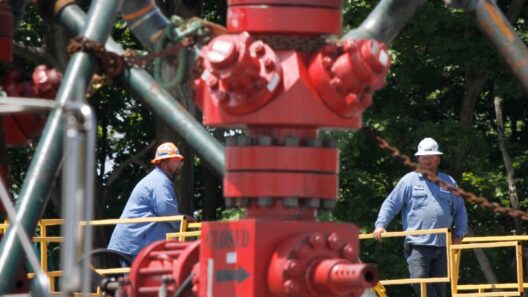Coffee, a quintessential beverage revered for its rich aroma and invigorating effects, faces an uncertain future as global warming accelerates. In many households worldwide, the morning ritual of brewing a hot cup of coffee sets the tone for the day. However, this comforting tradition is at stake due to a myriad of environmental changes wrought by climate disruption. The subtleties of temperature and precipitation to which coffee plants are exquisitely attuned are shifting, and the implications for coffee production could be dire.
The robusta and arabica species dominate the global coffee market, the latter being particularly cherished for its flavor profile. However, arabica coffee, which accounts for about 60-70% of total production, is especially vulnerable to climatic fluctuations. Thriving in specific altitudinal and temperature ranges, arabica coffee flourishes in regions that oscillate between optimal conditions, often found in mountainous terrains at elevations of 2,000 to 6,000 feet. Climate change disrupts this delicate balance, introducing variables that threaten its cultivation.
In regions traditionally ideal for coffee farming, rising temperatures are not just an inconvenience but a catalyst for widespread crop failure. Research indicates that a 1.5°C rise in temperatures could severely cripple the arabica coffee sector, compromising yields and quality. As climate zones migrate, cooler regions in South America, Africa, and Asia are predicted to become unsuitable for coffee cultivation due to prolonged heat and diminished rainfall. Imagine the bustling coffee farms of Colombia, drenched in sunlight and life, giving way to desert-like terrains devoid of the crops that have sustained livelihoods for generations.
Moreover, pests and diseases, emboldened by warmer climates, increasingly threaten coffee plants. The coffee borer beetle, a minuscule yet devastating pest, wreaks havoc on arabica coffee farms, significantly reducing crop yields. Traditionally, farmers could manage these infestations; however, as temperatures rise, these pests proliferate, creating an urgent struggle for farmers to maintain their crops. Agronomic strategies, such as biodiverse plantings and integrated pest management, become necessary tools to combat these challenges. Still, they may not be enough to counter the insidious impacts of rising temperatures.
As coffee farmers grapple with these dire conditions, their socioeconomic fabric frays. Many coffee-producing communities rely heavily on this crop for their livelihoods. The potential decline in coffee production threatens not only farmers’ incomes but also the food security of entire regions. Consequently, global supply chains face disruption, leading to increased prices for consumers. The ripple effects would extend beyond economics. Cultural identities tied deeply to coffee, from the brews in a quaint café to the rituals of morning coffee, are at risk of fading into history.
Yet, amidst this somber narrative, there exists an opportunity for innovation and adaptation. The coffee sector has begun to embrace sustainability as both a necessity and a guiding principle. Coffee agroforestry, which integrates tree cultivation with coffee plants, can enhance resilience against climate change. This practice not only helps mitigate temperature increases but also fosters biodiversity, inviting a host of benefits that extend to surrounding ecosystems.
Additionally, a shift toward climate-resilient coffee varieties is underway. Scientists and agronomists are exploring hybrid strains capable of withstanding the vagaries of climate change. The more resilient varieties promise to sustain flavor while offering a fighting chance against environmental extremes. However, this innovation does not come without risk, as preserving traditional varieties is essential to maintaining the diverse tapestry of coffee flavors and ecosystems worldwide.
Consumer awareness is also crucial in shaping the future of coffee. As individuals increasingly demand transparency regarding product sourcing, businesses are influenced to adopt sustainable practices. Recognizing the interconnectedness of consumption choices and environmental impact can inspire a profound metamorphosis in the coffee industry. By opting for ethically-sourced, sustainably-grown coffee, consumers become active participants in the fight against climate change.
Education and advocacy play pivotal roles in galvanizing both producer and consumer action. Initiatives that educate farmers about the importance of sustainable practices are essential for cultivating resilience. Likewise, campaigns that inform consumers about the broader implications of their coffee choices can elevate awareness of coffee’s environmental footprint and its vulnerability to climate disruption.
As we consider the future of coffee in light of global warming, it becomes increasingly evident that this unique beverage is a microcosm of larger environmental challenges. The intertwined fates of ecosystems, farmers, and consumers demand a collaborative approach to mitigate the threat posed by climate change. If we fail to act decisively, the comforting aroma of freshly brewed coffee may become a nostalgic memory, rather than a morning staple.
Conclusively, the tale of coffee’s future is not solely a story of peril, but one of hope and potential. Through innovative practices, collective action, and heightened consumer awareness, it is possible to alter the bitter trajectory awaiting our beloved morning brew. The time for conscious choices and unwavering commitment to sustainability has arrived, ensuring that while climate change may alter our landscapes, it does not extinguish our passion for coffee.







